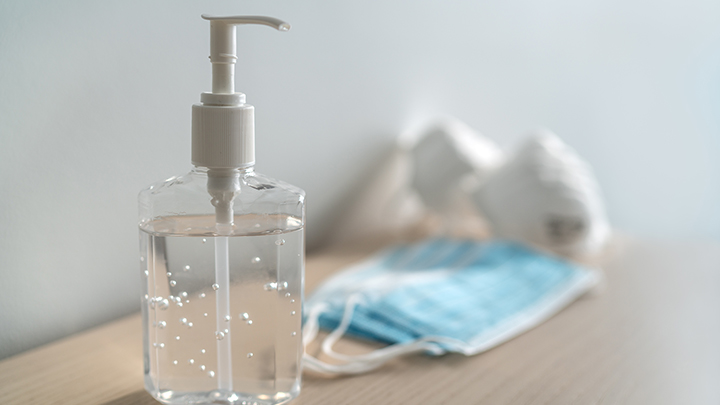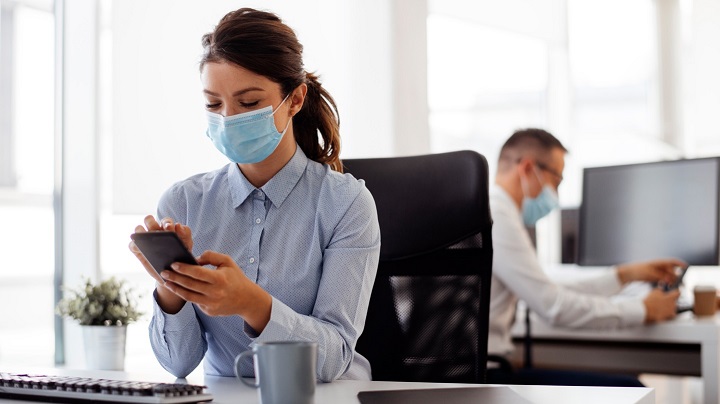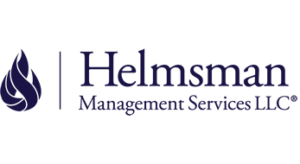
Our risk control team is here to help you mitigate operational risks your business may be facing.
As we continue to adapt to the changing landscape of COVID-19, it’s important to be thoughtful on how to protect your staff and visitors and to document the steps you take to demonstrate your observance of the requirements of the CDC, State and Local health authorities. Helmsman’s risk control team is here to help you mitigate operational risks your business may be facing.
(Updated 6/26/20)
Operational/Cleaning & Disinfecting
Q1: What are the key considerations for resuming and maintaining healthy business operations?
A1: The Centers for Disease Control and Prevention (CDC) offers several strategies and recommendations for employers responding to COVID-19, including those seeking to resume normal or phased business operations:
- Conducting daily health checks
- Conducting a hazard assessment of the workplace
- Encouraging employees to wear cloth face coverings in the workplace, if appropriate
- Implementing policies and practices for social distancing in the workplace
- Following enhanced cleaning and disinfecting practices
- Improving the building ventilation system
The CDC Toolkit provides a table outlining the engineering controls, administrative controls, and personal protective equipment (PPE) that employers may use to help prevent the spread of COVID-19 in the workplace
Our website contains many additional reopening resources including general considerations and industry specific guidance.
Q2: How do I clean and disinfect my workplace?
A2: SARS-CoV-2, the virus that causes COVID-19 can be killed if you use the right products and apply these disinfectants according to the manufacturer’s guidelines. EPA has compiled a list of disinfectant products that can be used against COVID-19, including ready-to-use sprays, concentrates, and wipes. Each product has been shown to be effective against viruses that are harder to kill than viruses with a similar cell structure to the one that causes COVID-19.
This document provides a general framework for cleaning and disinfection practices. The framework is based on doing the following:
- Normal routine cleaning with soap and water will decrease how much of the virus is on surfaces and objects, which reduces the risk of exposure. Cleaning a surface prior to applying a disinfectant is important because organic matter on the surface can react with the disinfectant and reduce its effectiveness.
- Disinfection using EPA-approved disinfectants against COVID-19 can also help reduce the risk. Frequent disinfection of surfaces and objects touched by multiple people is important, as is following product instructions on how long the disinfectant should remain on the surface.
- When EPA-approved disinfectants are not available, alternative disinfectants can be used (for example, 1/3 cup of bleach added to 1 gallon of water, or 70% alcohol solutions). Do not mix chlorine bleach or other cleaning and disinfection products which may contain ammonia together. This chemical mixture can create toxic gases called chloramines that are very dangerous to inhale. Bleach solutions will be effective for disinfection up to 24 hours. Keep all disinfectants out of the reach of children. Read EPA’s infographic on how to use these disinfectant products safely and effectively.
Find additional information at CDC’s website on Cleaning and Disinfecting Your Facility and guidance for cleaning and disinfecting in the Reopening Decision Tool Continue to check the CDC website for more detailed reopening guidance as it is published.
Q3: How long is the SARS-CoV-2 virus stable on surfaces?
A3: Currently, there is not a definitive answer to this question regarding transmissibility of the virus from surface contamination to humans. However, a March 2020 study published in the New England Journal of Medicine (NEJM) did a comparison of the viability of the SARS-CoV-2 (the virus that causes COVID-19) to SARS-CoV-1. The study found SARS-CoV-2 was detectable in aerosols for up to three hours, up to four hours on copper, up to 24 hours on cardboard and up to two to three days on plastic and stainless steel.
See the NEJM Article on Stability of COVID-19 – NIH Release for additional details on this NEJM study.
The findings affirm the guidance from public health professionals to prevent the spread of SARS-CoV-2:
- Stay home when you are sick.
- Avoid touching your eyes, nose, and mouth.
- Use face coverings of the nose and mouth when out in public.
- Cover your cough or sneeze with a tissue, then throw the tissue in the trash.
- Maintain physical distancing of 6 feet or more from others.
- Wash hands frequently with soap and water and hand sanitizer of at least 60% alcohol.
- Clean and disinfect frequently touched objects and surfaces using disinfectants.
Work Practices
Q4: Should my workplace screen employees and visitors for COVID-19 symptoms (such as temperature checks) before they enter my worksite?
A4: Employers should check with individual State and Local Public Health resources to determine if there are jurisdictional requirements by location or occupation that would require screening.
Most importantly employees and visitors should be reminded if they are ill and experiencing symptoms such as cough, shortness of breath, chills, fever (oral reading of 100.4 F or greater) or they are positive for COVID-19 or have been exposed to someone with COVID-19 they should not enter the workplace. Many individuals do not exhibit symptoms and those who do may not show symptoms for 2–14 days after exposure.
If temperature monitoring is implemented, employers must protect the employee conducting the temperature screening. The most protective methods incorporate physical barriers to eliminate or minimize the screener’s exposures due to close contact with a person who may have symptoms during screening and personal protective equipment such as a gown, gloves, face shield, handwashing and sanitizers. The CDC offers several considerations for personal protection of screeners under the heading “Reducing the spread of COVID-19 in the workplace.”
Choosing to implement screening measures should be discussed with legal counsel and human resources to determine how the information will be obtained, who will be reviewing the information, and how will it be used. Any medical information obtained on an employee should be maintained separate from personnel records.
Q5. What guidance is available on thermal scanning systems for measuring body temperature?
A5: Businesses are looking to conduct temperature screening on a wide-scale basis with the use of thermal scanning devices. The Food & Drug Administration (FDA) has issued guidance and policy recommendations to help expand the availability of telethermographic systems used for body temperature measurements for triage use during the COVID-19 emergency but has stated these devices should not be used in diagnosis.
When developing health checks in the workplace, it is important to remember that symptoms of COVID-19 may appear 2 – 14 days after exposure to the virus (pre-symptomatic), and in some cases the symptoms can be mild, or we are learning that about 35% of the population does not show symptoms at all (asymptomatic). Many employers are considering screening for the presence of fever or elevated body temperature of 100.4 degrees Fahrenheit or above. But fever is not present in every case, and symptoms of COVID-19 extend beyond fever, and should be part of an overall symptoms screen including, but not limited to, cough, shortness of breath, body aches, chills, new loss of taste or smell or exposure to confirmed or suspected COVID-19 by the worker or anyone in their household. Most importantly, policies and procedures need to be developed ahead of time to determine how they will handle responses.
Q6: What is the appropriate course of action if an employee tests positive for COVID-19?
A6: In most cases, you do not need to shut down your facility. But you should close off any areas used for prolonged periods of time by the sick person:
- Wait 24 hours before cleaning and disinfecting to minimize potential for anyone entering the area from being exposed to respiratory droplets.
- During this waiting period, open outside doors and windows, if possible, to increase air circulation in these areas.
Follow the CDC cleaning and disinfection recommendations:
- Clean dirty surfaces with soap and water before disinfecting them.
- To disinfect surfaces, use products that meet EPA criteria for use against SARS-Cov-2, the virus that causes COVID-19, and are appropriate for the surface.
- Always wear gloves and gowns appropriate for the chemicals being used when you are cleaning and disinfecting.
- You may need to wear additional personal protective equipment (PPE) depending on the setting and disinfectant product you are using.
In addition to cleaning and disinfecting, employers should determine which employees may have been exposed to the virus and need to take additional precautions:
- Most workplaces should follow the Public Health Recommendations for Community-Related Exposure.
- Critical infrastructure workplaces should follow the guidance Implementing Safety Practices for Critical Infrastructure Workers Who May Have Had Exposure to a Person with Suspected or Confirmed COVID-19.
Sick employees should follow CDC-recommended steps. Employees should not return to work until they have met the criteria to discontinue home isolation and have consulted with a healthcare provider and state or local health department.
If an employee is confirmed to have COVID-19, employers should inform fellow employees of their possible exposure to COVID-19 in the workplace but maintain the individual’s confidentiality.
Employers are encouraged to reach out to the State/Local Health departments for additional guidance and concerns and for any jurisdictional requirements.
Q7: When should an employee in a non-healthcare occupation who is suspected or confirmed to have COVID-19 return to work?
A7: Employees who display the symptoms associated with COVID-19 should continue to follow the CDC advice labeled “Steps to prevent the spread of COVID-19 if you are sick.”
Both employers and employees should review and follow the most current CDC guidance on when to discontinue home isolation and use that guidance, along with any state or local health department requirements, to determine that is safe for the employee to return to work.
Q8: What is contact tracing?
A8: Contact tracing is an effective and specialized public health disease control strategy that involves investigating people with confirmed or suspected cases and those they have been in contact with during the time that they may have been infectious. The intent is to interrupt disease transmission—typically by asking people with confirmed cases to isolate and those they had contact with to quarantine at home voluntarily. Contact tracing is a key strategy to prevent the further spread of COVID-19. Contact tracing is a specialized skill and relies on key concepts:
- Trace and monitor contacts of infected people. Notify them of their exposure.
- Support the quarantine of contacts. Help ensure the safe, sustainable and effective quarantine of contacts to prevent additional transmission.
State & Local public health authorities might connect with employers and business as part of their contact tracing efforts to curb community-based transmission.
Face Coverings and Respirators
Q9: What is a face covering and how do I use and care for my cloth face covering?
A9: Cloth face coverings are not designed for use as particulate respirators and do not provide as much respiratory protection as an N95 respirator.
Face coverings provide barrier protection against droplets, including large respiratory particles that are exhaled from the wearer, from becoming airborne. Cloth face coverings don’t protect the wearer from airborne particulate or aerosols containing viruses, such as SARS-CoV-2, shed by other people.
The CDC recommends that everyone wear cloth face coverings when leaving their homes, regardless of whether they have symptoms of COVID-19. There is evidence that people can spread the disease even if they do not have any symptoms.
Q10: What impact does a face covering have on heat stress?
A10: Heat stress can occur when workers are exposed to heat, regardless of the source, and/or high humidity in their environment. Heat related illnesses may impact all outdoor workers, including those in agriculture, construction, landscaping and those working indoors around hot processes, such as foundries. As a defense against heat stress, our bodies naturally cool by radiating heat from the entire surface area of the skin, and through sweating and evaporation of the sweat from the skin. A face covering does not adversely impact your body’s normal process of allowing heat to escape via thermal radiation because the face covering is over a small area of the skin. Inside the microclimate of the face covering, the wearer’s breath is exhaled, and this air is both warm and moist. This warm, humid air in the microclimate inside a face covering may cause the wearer to perceive that they are warmer than normal in their work environment.
In May 2005, a National Institute of Health (NIH) study investigated the effects of wearing N95 filtering facepiece respirators (FFRs) and surgical facemasks on heart rate and thermal stress and investigated the wearer’s perceptions while wearing these devices. Research determined that N95 and surgical facemasks induce significantly different temperature and humidity in the microclimates of the facemasks, which have profound influences on heart rate and thermal stress and the wearer’s subjective perception of discomfort. Surgical facemasks were rated significantly lower for perception of humidity, heat, breath resistance and overall discomfort compared to N95 FFRs.
The study also concluded that the surgical facemasks provided significantly higher moisture permeability and air permeability and these facemasks were thinner than the N95 FFRs, indicating that surgical facemasks should be more breathable and less humid and hot. The subjects’ perception of breathing resistance and discomfort was reportedly better when wearing the surgical masks.
Cloth face coverings may be constructed of different types and weights of fabric. The CDC recommends constructing cloth face coverings of natural fibers such as cotton, ideally two-ply. A higher thread count fabric, ideally 160 or more, provides increased filtration. The fabric type and its density (thread count) may impact both breathing resistance and heat/humidity build up in the microclimate on the interior of the face covering along with the filtration efficiency of the face covering. The American Chemical Society (ACS) published a study that examined the Aerosol Filtration Efficiency of Common Fabrics Used in Respiratory Cloth Masks.
Selection of cloth face coverings constructed of light weight; breathable fabric may be preferred for workers in hot, humid environments. Alternatively, surgical type masks may be an option for face coverings in these environments.
Q11: If I cannot purchase NIOSH-Approved N95 Filtering Facepiece Respirators (FFRs) in the marketplace, how do I select a temporary replacement FFR for use in my workplace?
A11: If workers are completing tasks that require them to wear N95 FFRs and the make and model they are assigned to wear cannot be sourced in the marketplace, an employer has the option to seek a similar substitute for the NIOSH-approved FFRs from imported sources or provide the workers with a higher grade of respiratory protection (i.e. half-face elastomeric filtering facepiece respirator with particulate filter cartridges, powered air purifying respirator, etc.).
The CDC and FDA have determined that respirators that meet the regulatory requirements of the countries discussed in the FDA’s FAQs on the Emergency Use Authorizations for Non-NIOSH Approved Respirators may be appropriate to protect workers during the COVID-19 pandemic. However, buyers should be aware of the factors to Consider When Planning to Purchase Respirators from Another Country.
Additionally, there are numerous counterfeit FFRs being sold in the marketplace. The FDA has assembled a list of authorized respirators and a list of counterfeit respirators to assist users with identification of FFRs that are manufactured in accordance with imported guidelines and those that should not be used in the workplace.
If you change the make and model of FFR assigned to an employee, the assigned respirator must be qualitatively or quantitatively fit tested to verify that the respirator seals and fits properly against the worker’s face.
Q12: What does an employer have to do if issuing Filtering Facepiece Respirators?
A12: The COVID-19 pandemic has created a shortage in the global marketplace for N95 Filtering Facepiece Respirators (FFRs). If a process or task requires that a worker wear N95 FFRs and the make and model of FFR is not currently available, employers may be purchasing alternative respirators and during the pandemic may be using FFRs manufactured according to other country’s design specifications.
OSHA has temporarily exercised its enforcement discretion concerning supply shortages of disposable filtering facepiece respirators (FFRs), including as it relates to their extended use or reuse, use beyond their manufacturer’s recommended shelf life, use of equipment from certain other countries and jurisdictions, and decontamination.
OSHA has issued temporary enforcement guidance for N95 respiratory protection fit testing requirements in the Respiratory Protection standard (29 CFR 1910.134), as long as employers have made good-faith efforts to comply with the requirements of the standard and to follow the steps outlined in the March 14, 2020 Temporary Enforcement Guidance for annual fit-testing of N95 FFRs in healthcare, and April 8, 2020 Expanded Temporary Enforcement Guidance on respiratory protection fit-testing for N95 FFRs in all industries , memoranda (as applicable to their industry). Ideally, an employer should continue respirator fit testing when issuing a new make and model of N95 FFR or equivalent to its workers.
This temporary enforcement guidance will likely be rescinded by OSHA once availability of N95 FFRs is restored in the global marketplace.
For additional information refer to the respirator section of the OSHA Salt Lake Technical Center’s COVID-19 Frequently Asked Questions.
Occupational Safety & Health Administration (OSHA)
Q13: How is OSHA responding to COVID-19?
A13: The Occupational Safety & Health Administration (OSHA) continues to be active in worker protection and safety. They have joined with their peers in the Centers for Disease Control & Prevention (CDC) to develop specific material useful for workplaces and businesses to protect workers. While there is no a specific OSHA standard regarding COVID-19, OSHA will rely on the General Duty Clause to provide a safe and healthy place of employment free from recognized hazards that are causing or likely to cause death or serious physical harm. OSHA will also rely on existing standards such as respiratory protection, personal protective equipment, hazard communications and recordkeeping for general guidance and enforcement.
In addition to several industry specific guidance, OSHA has also published helpful documents for businesses including:
- Guidance for Preparing Workplaces for COVID-19: This publication assists in identifying COVID-19 a disease caused by the SARS-CoV-2 virus and considerations to reduce the impact on the workplace.
- Classification of Worker Exposure Risk to COVID-19: This publication assists in evaluating and classifying job tasks into four risk exposure levels.
- Guidance on Returning to Work: This new publication assists employers in the steps to consider with re-opening operations in a phased approach. The publication reinforces and provide examples covering six main Guiding Principles:
- Hazard Assessment
- Hygiene
- Social Distancing
- Identification and isolation of sick employees
- Return to work after illness or exposure
- Controls: including engineering, administrative, work practices and protective equipment
Q14: How do I determine if COVID-19 is OSHA recordable?
A14: OSHA has issued temporary enforcement guidance related to the COVID-19 pandemic and recordkeeping. Organizations need to carefully evaluate the report of injury/illness. OSHA is looking at employer practices and reasonable investigation into work-relatedness based on the information available to the employer. OSHA compliance officers are being advised to evaluate areas such as, if the job duties require the workers to be in close contact with the public, whether cases have occurred among workers who work together, worker(s) develop symptoms after close exposure with a positive worker.
Special Events
Q15: What are the key considerations for summer youth program events?
A15: Preparation and following CDC, state, and local public health department guidelines is the most critical step. A detailed evaluation of the events and a hazard assessment of the activity or school program that will be taking place is necessary with COVID-19 prevention efforts in mind.
Guidance can be found in the CDC activities and initiatives which provides detail on COVID-19 considerations for youth programs and summer camps.
- Evaluate necessity and conduct a hazard assessment for each event and activity.
- Consider and discuss with legal counsel a COVID-19 clause for assumption of risk and waiver of liability for camp/activity participation agreement forms.
- Follow CDC guidance for mass transit for school provided transportation.
- Stagger arrival and drop-off times or implement protocols to limit close contact. with parents/caregivers as much as possible.
- Implement policies and practices for social distancing.
- Follow enhanced cleaning and disinfecting practices, particularly of shared spaces and equipment.
- Encourage frequent handwashing and use of hand sanitizers.
- Keep groups together to avoid switching groups or teachers, allowing minimal mixing between groups.
- Conduct daily health checks of staff and participants in accordance to all State/Public Health recommendations.
- Train staff and have a plan for when a staff member, child, or visitor becomes sick.
- Maintain contact with the local department of health or the state department of education as specifics, directives, or guidance evolves.
Additional guidance on this topic can be found at the American Camp Association.
Q16: Should the use of a waiver be contemplated or recommended as a risk management tool for business re-opening?
A16: Legal counsel involvement is recommended if considering the use of COVID-19 waivers, disclaimers, or signage.
- A waiver and/or disclaimer are intended as an acknowledgement of an assumption of a COVID-19 risk as a result of utilizing a service or patronizing a business.
- These controls may be considered legal documents thus needing legal counsel involvement concerning their impact, as well as a review for proper wording, requirements, and documentation.
- Ask your legal counsel to explain if there are any local, state and federal legal immunities/protections that may reduce the risk of litigation.
As part of your risk management process, please follow the specific state guidelines for each phase of the reopening as well as refer to the Centers for Disease Control and Prevention reopening considerations CDC COVID-19. This is vital because businesses shouldn’t rely on waivers as their only risk management control. All businesses have a standard of care as well as the duty to inform.
Where there are insurance coverage questions, please refer to your broker.
Additional Help
Q17: How do I get in touch with the Risk Control and engineering organizations for a safety question, whether general or related to COVID-19, or for safety resources?
A17: Contact your risk control specialist or risk engineer by phone or email. They can provide a prompt response to your need. We also offer both live and recorded webinars on a wide variety of topics. We provide access to additional training via our vendor partnerships with Summit Training and JJ Keller.
Give our Risk Control Consulting Center a call at 866-757-7324 or email us.
Featured insights
This website is general in nature and is provided as a courtesy to you. Information is accurate to the best of Helmsman Management Services’ knowledge, but companies and individuals should not rely on it to prevent and mitigate all risks as an explanation of coverage or benefits under a policy or service contract. Consult your professional advisor regarding your particular facts and circumstance. By citing external authorities or linking to other websites, Helmsman Management Services is not endorsing them.
Our risk control services are advisory only. We assume no responsibility for: managing or controlling customer safety activities, implementing any recommended corrective measures, or identifying all potential hazards. No attempt has been made to interpret any referenced codes, standards, or regulations. Please refer to the appropriate government authority for interpretation or clarification.





